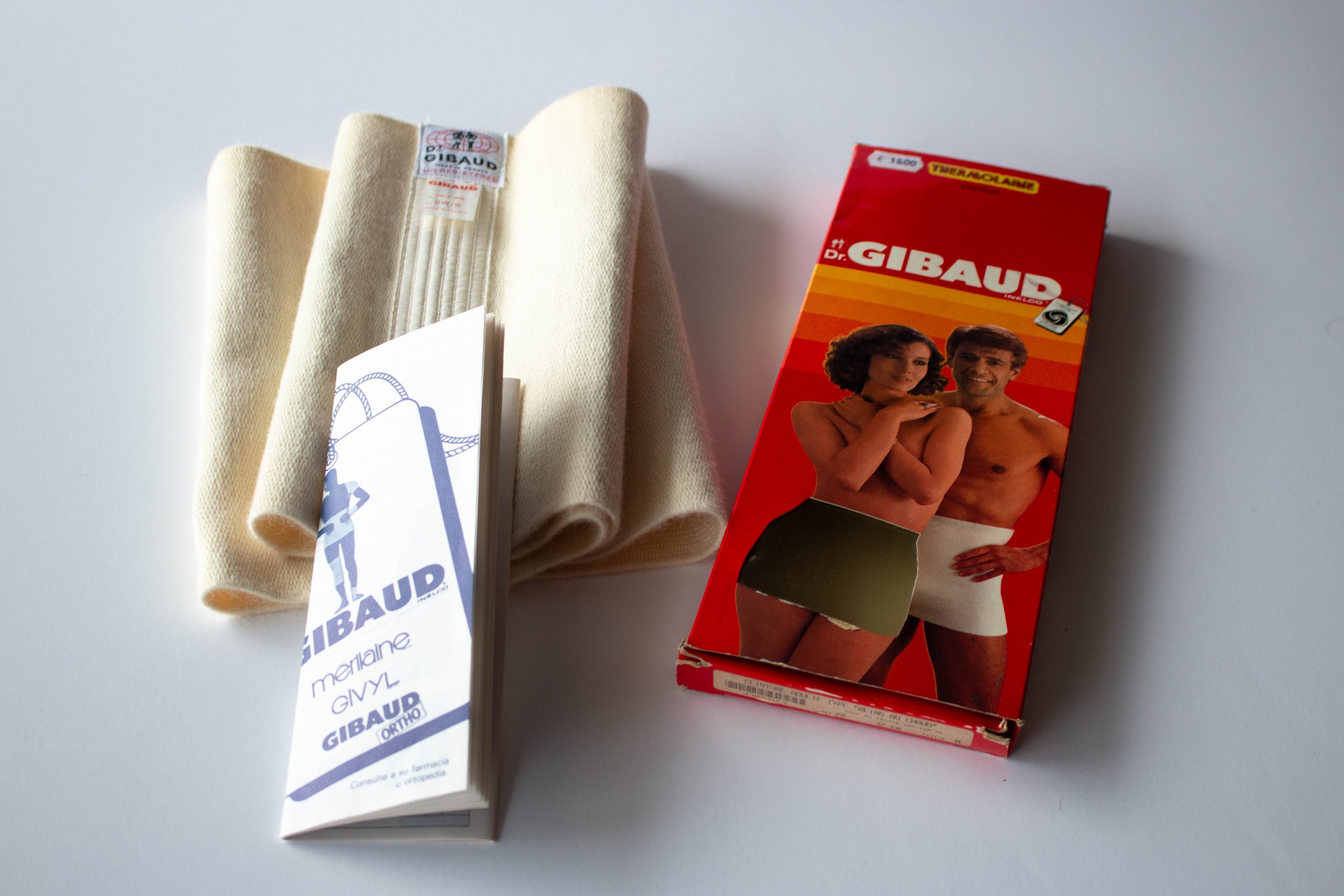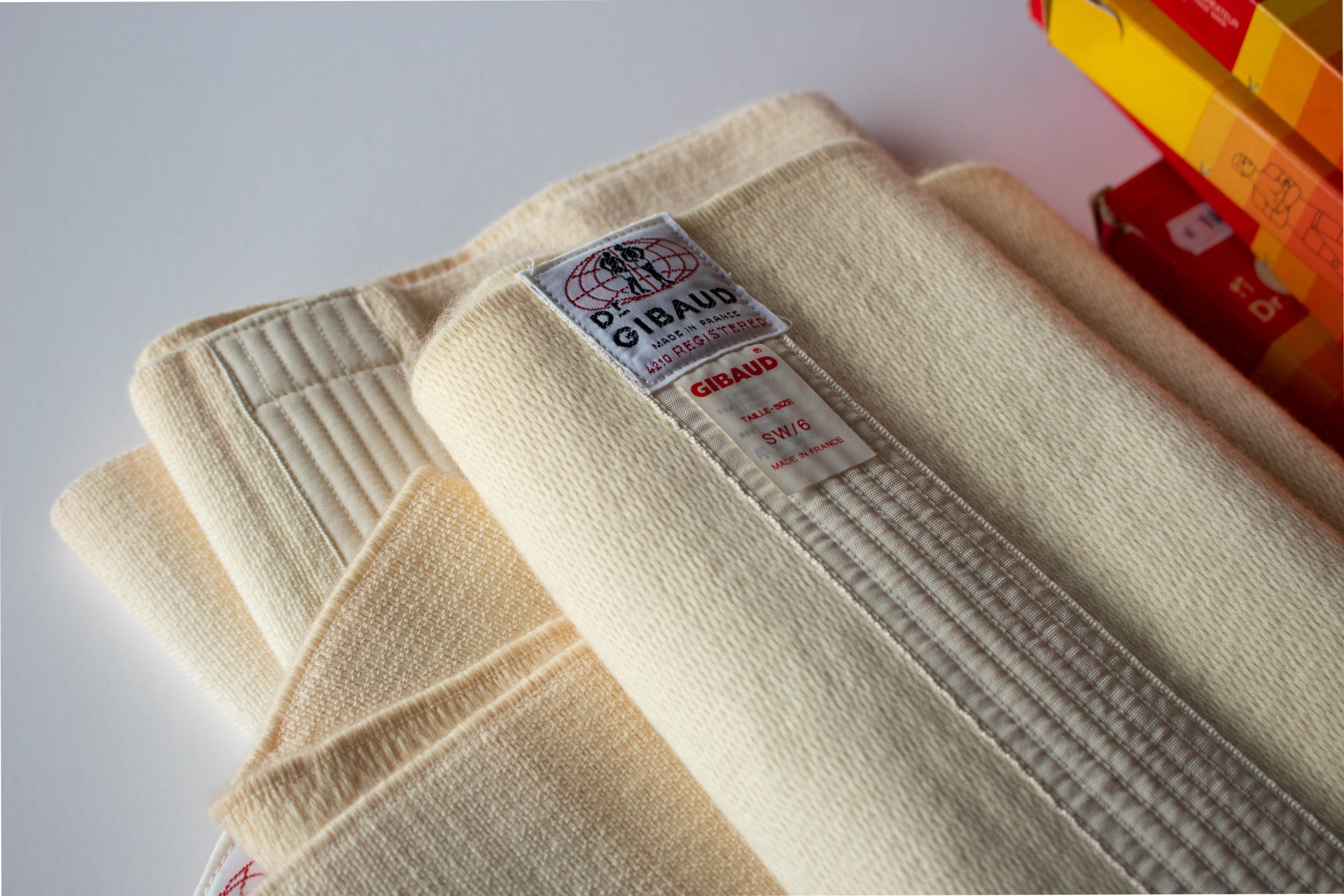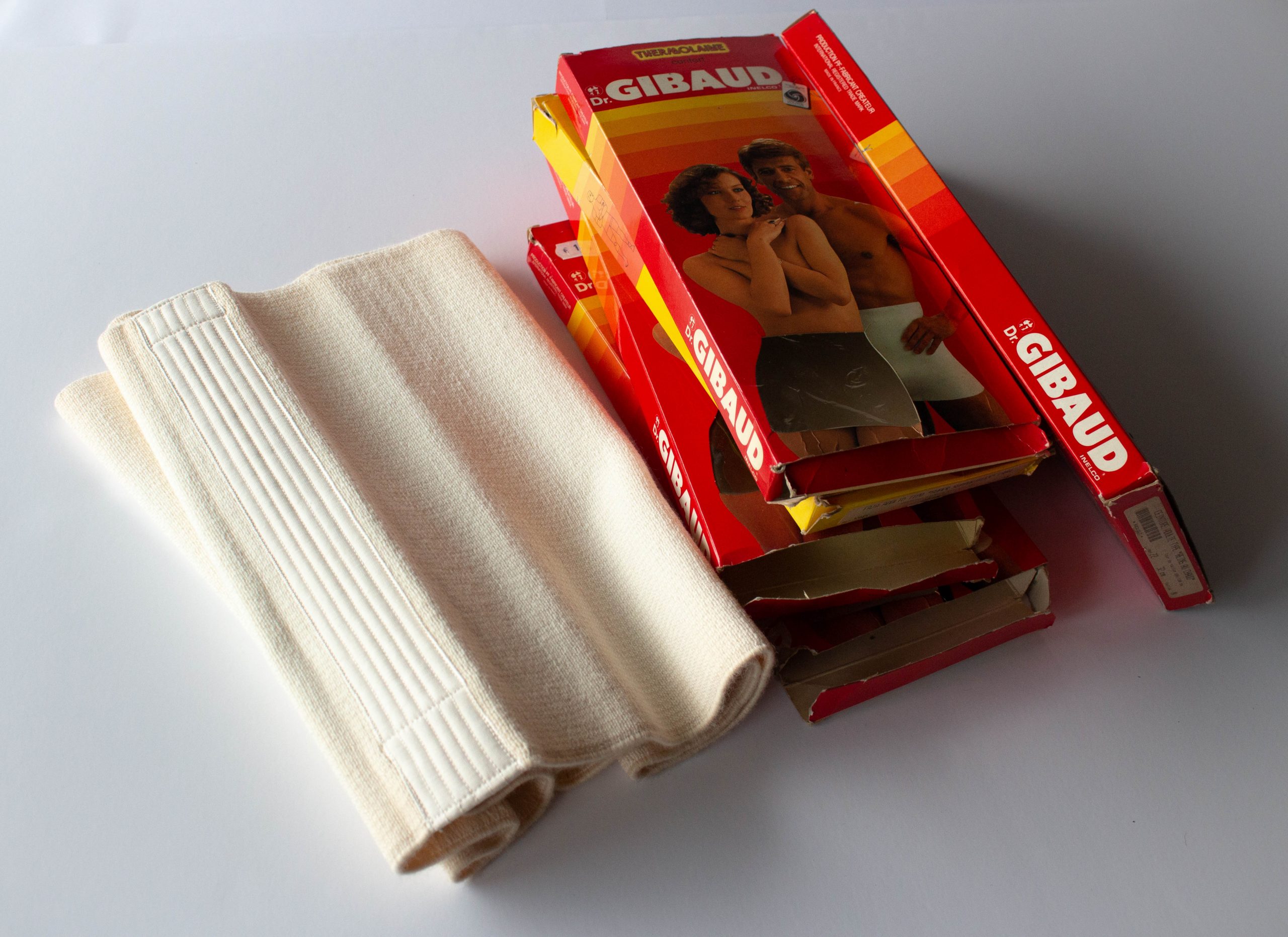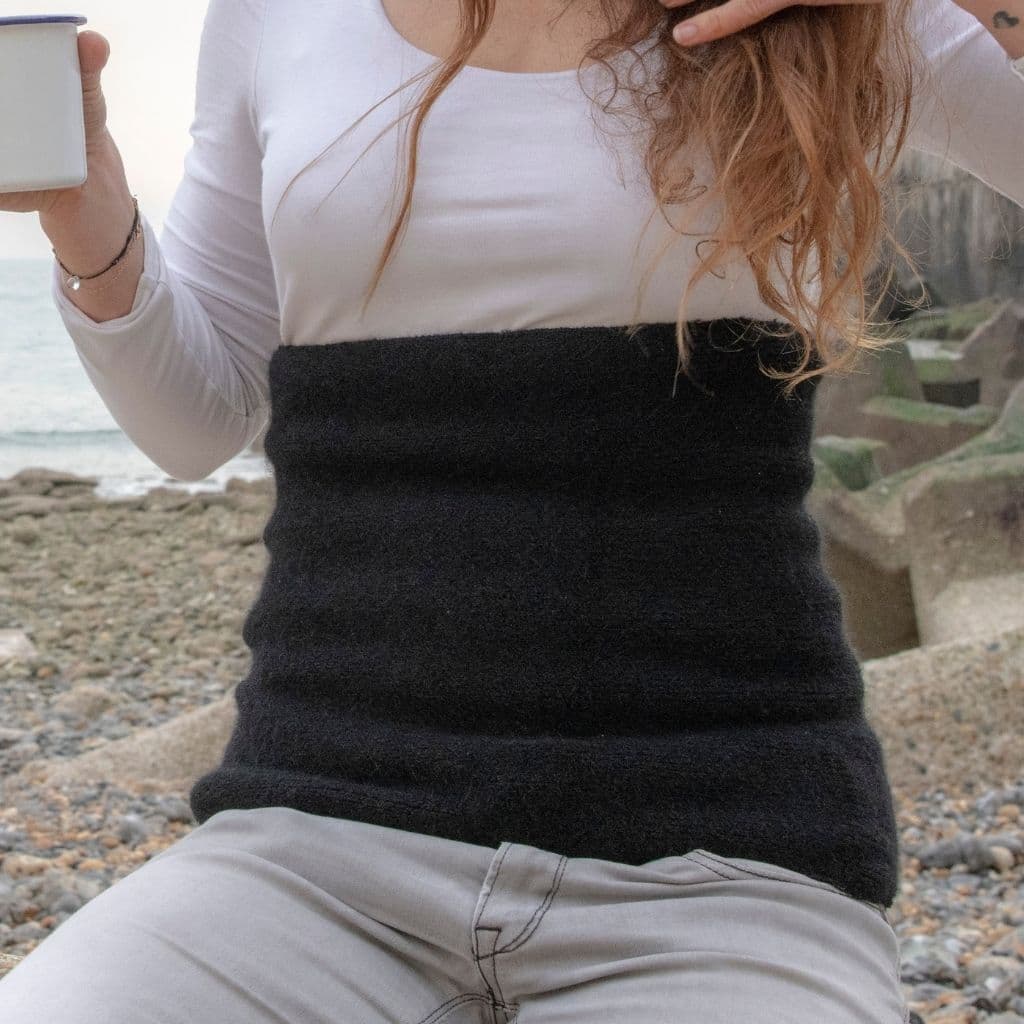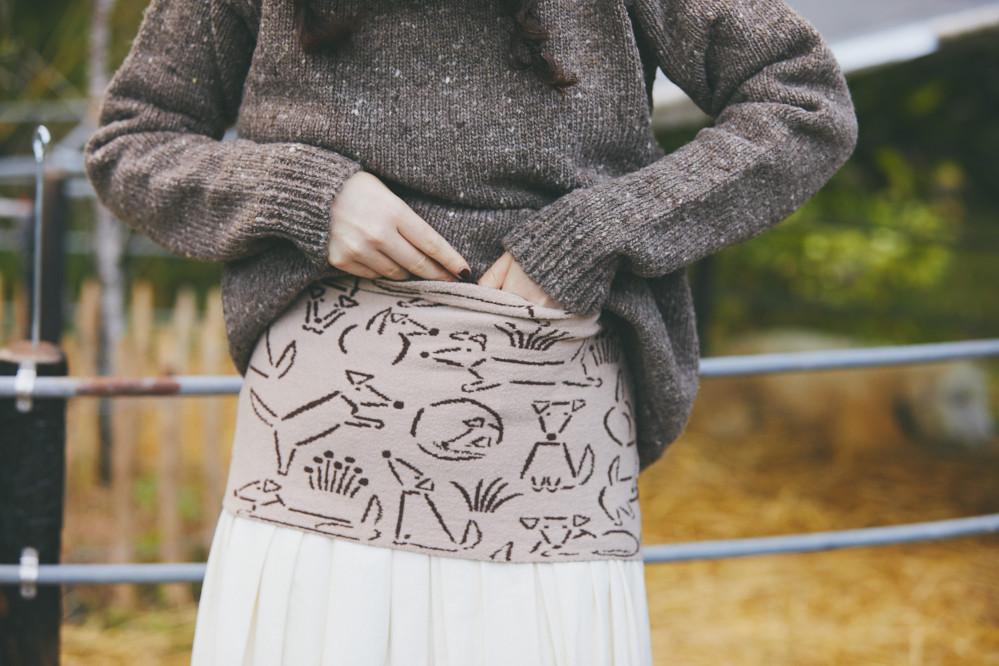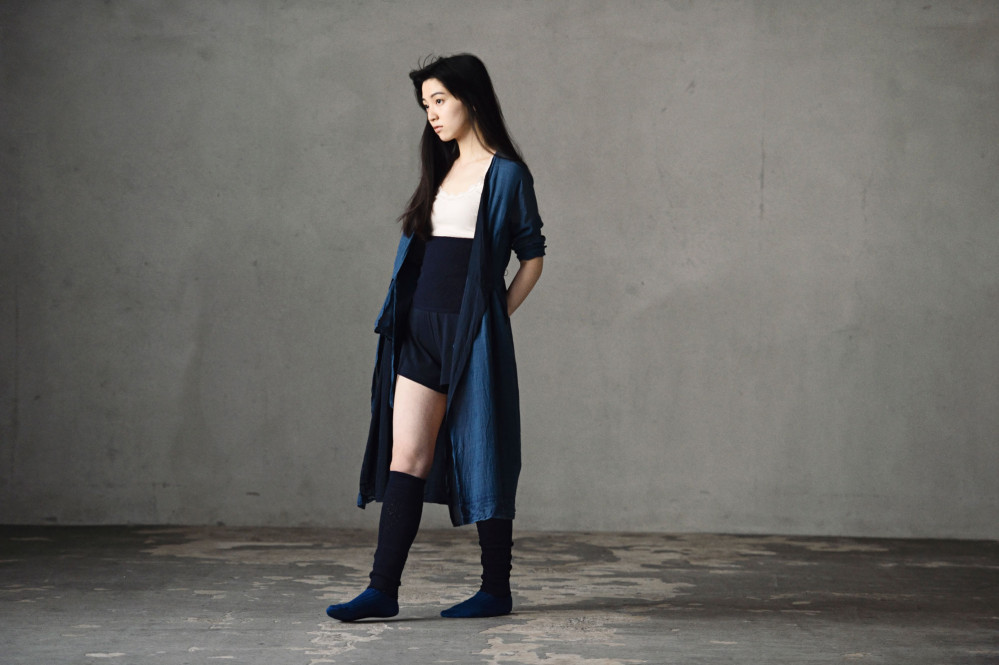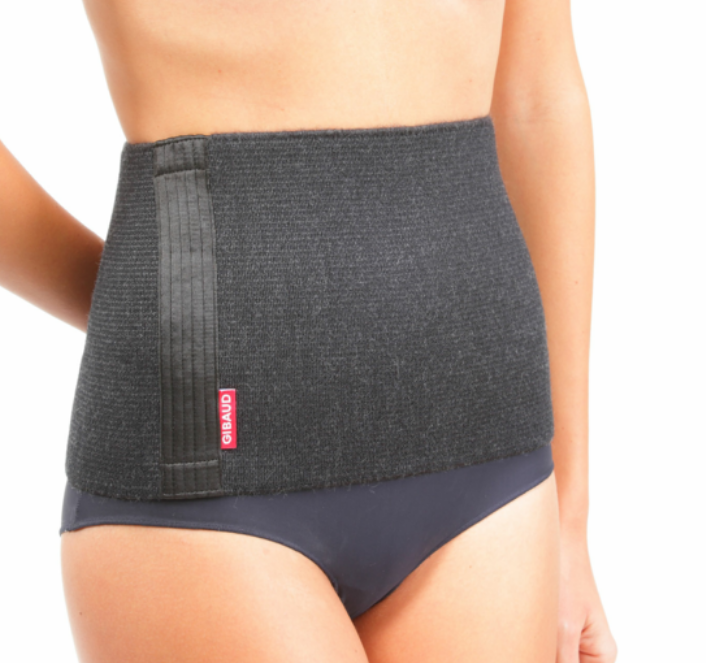Hip Scarves. Image by Marie Verdeil.
Last year my partner stumbled upon a fascinating piece of clothing in a second-hand shop in Donostia, Basque Country. It looks like a miniskirt but is a (unisex) piece of underwear that increases thermal comfort in winter.
The clothing piece comes by different names: hip warmer, hip hugger, hip scarf, waist scarf, back warmer, belly warmer, tummy band, core warmer, warming belt, thermal brace — the list goes on. It is known as a “Haramaki” or “belly wrap” in Japan.
My hip warmers come in different sizes and are made from 69% wool, 22% cotton, and 9% elastodiene. Judging by the packaging design, they date from the 1970s or early 1980s.
Thermal comfort
The hip scarf can significantly improve thermal comfort for two reasons. First, it insulates the body’s core, a condition to be comfortable in winter. If the core temperature falls, your body reduces the blood flow to the extremities by vasoconstriction. In extreme cases, this can save your life (at the expense of some fingers or toes), but in daily life, it results in cold hands and feet. The hip warmer keeps your core warm, which increases blood circulation and distributes warmth throughout the body.
Second, the hip warmer covers a part of your body that is otherwise easily exposed to the cold because of movements and body postures. Some modern clothes cover the body from neck to ankles (long dresses, ski suits, baby clothes), but most clothing nowadays consists of an upper part (shirt, sweater, blouse) and an underpart (pants, skirt). Consequently, bending over or stretching out can leave the hips, the belly, and the lower back exposed to the cold. Even if this happens only briefly, the warm air between skin and clothes will escape to the surroundings. The hip scarf prevents this.
Some activities make the hip warmer extra handy. For example, it works great for cyclists to prevent naked lower backs, and it insulates the belly of breastfeeding moms.
Hip Scarves. Image by Marie Verdeil.
The advantages of “fragmented” clothing
Hip warmers are related to both arm and leg warmers (or wrist and ankle warmers), which are also examples of “fragmented” clothing — garments that seem to be “incomplete.” I invented the term because I could not find a collective name for these pieces of clothing. The leaflet in the box of my hip scarf also shows knee and elbow warmers for sale.
It may seem odd to wear incomplete pieces of clothing. Why wear elbow, arm, and belly warmers when you can wear an extra layer of “normal” clothes, such as a thick sweater? However, these clothes offer an advantage: they can be put on and taken off quickly without stripping down. Whether or not we feel comfortable depends on many factors, and these are prone to change. The environment (temperature, air movement, humidity), our metabolism (the level of physical activity), and the objects that we are exposed to and in contact with (cold floor, hot cup of tea).
Fragmented clothes allow for adjusting clothing insulation quickly. Putting on or taking off the hip warmer takes no more than 5 seconds: you can step into it and pull it up. That allows for micro-management of the body’s thermal balance. It may be a bit harder when you have wide hips because you need to pull the hip scarf over your head.
In contrast, a layer of thermal underwear can land you in serious trouble when the thermal environment changes. I am speaking out of experience here. My wool thermal underclothing keeps me comfortable in surprisingly low air temperatures. However, when I need to enter a heated indoor space in winter, it becomes a curse rather than a blessing. My body will overheat quickly, and there’s only one way to solve it: strip down to the underpants.
On the move
Fragmented clothes are handy while being on the move. A small package can make a big difference. For example, when I cycle to the city, I usually leave in the afternoon when the sun shines. I would quickly overheat with winter clothes. However, I come back after sunset, when it is much colder. In between, I may be in a heated shop but just as well on a frosty bar terrace.
Carrying a hip warmer and a pair of arm warmers, I now need to take fewer clothes. By insulating those body parts most exposed to the cold — on the bike the wind blows right into my jacket sleeves — I need less insulation overall. I don’t have leg or ankle warmers (yet), but they would protect another part of the body exposed to cold on a bicycle.
How to wear a hip scarf
You can wear a hip scarf in different ways. You can tuck it into your shirt and pants or skirt so that it remains largely invisible to the outside world, or you can show it off, wearing it above anything else except for your jacket. The second method is the most practical because you can remove the hip warmer quickly. However, these are not the 1980s, so you need a certain level of indifference for fashion. Intermediate solutions are also possible. I sometimes wear the hip scarf under my shirt but over my pants, which looks like I have an extra shirt underneath.
Until recently, the Japanese regarded the “belly warmer” — or “Haramaki” — as out-of-date underwear worn by old men. Traditionally, it was considered a functional piece of clothing, usually hidden under clothes and considered slightly embarrassing. However, in recent years it has become a fashionable item largely thanks to Japanese game designer Itoi Shigesato, who launched a Nintendo-themed collection. His creations invite you to show off. There is talk of a revival of the Haramaki. Indeed they are now also sold under that name in other countries.
Image: Ultra Warm Merino Haramaki, Nukunuku.
Haramaki from Japanese brand Hobonichi.
Haramaki and leg warmers from Japanese brand Hobonichi.
Dr. Gibaud’s Thermal Brace is still for sale and now available in several colors.
Pain relief & sports
Dr. Gibaud, the company that made my hip warmers, keeps selling the same product. However, it doesn’t promote it as a fashion article. Dr. Gibaud now promotes hip warmers as a pain relief method. For example, keeping your lower back warm can prevent or relieve the symptoms of lower back pain. A belly warmer can also relieve bladder, kidney, rheumatic and menstrual pains. Nowadays, people often use heat pads to relieve those pains, but hip warmers (and hot water bottles) can do similar things for much less money and waste.
Fragmented clothes are also handy during sports and other physical activities. They keep you warm during and after exercise, which decreases the chance of damage to muscles and ligaments. Leg warmers originated as athletic wear for keeping dancers warm. They only became a fashion hype in the early 1980s through movies like Flashdance and Fame. Finally, hip scarves should not be confused with corsets (which make you look thinner) or support braces (which correct a posture).
Thanks to Adriana Parra.
Related articles:
